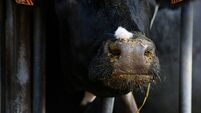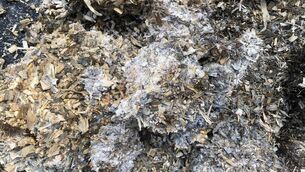Milk quota shortage ‘must be addressed’
Mr Walsh told the Teagasc national dairy conference in Killarney yesterday there was a need to look at ways of attracting increased quantities of quota into restructuring to try to satisfy the demands of those who need to increase quota size.
The question of price was an obvious one to look at in this context. Lack of quota for restructuring, particularly in some parts of the country, was a serious problem.
“We need to see how this can be addressed. Perhaps we should look to see if the restructuring schemes can be tailored to reflect better the conditions within the individual co-op areas. This is not a simple matter and is something which needs careful analysis.
“There is a limited supply of quota and there are various factors affecting the decision of quota holders as to whether to surrender their quotas to restructuring.” Mr Walsh said he had asked the Milk Quota Review Group to reflect on this matter and to make further submissions to him which might enable them to address this problem.
A Teagasc economist warned the conference that changes in EU and world trade policy will lead to continuing income pressure in dairy farming. Trevor Donnellan said farmers who are committed to continuing in dairying must grow their business and adopt the most effective cost-cutting methods.
“Under current quota policy, the limited amount of quota becoming available will not allow sufficient expansion in milk production to maintain income. Therefore huge emphasis must be placed on cost efficiency”.
Teagasc dairy specialist Tom O'Dwyer said the difference in cost between the lowest and highest cost milk producers is 8c/litre, (almost 30p/gallon). This amounts to a massive €15,000 per year in lost income on many dairy farms.
The number of dairy farmers had dropped from €63,000 in 1983 to €26,000 today, a fall of over 4% per year. This decline was set to continue. In 2001, almost 1,200 farmers ceased milk production.
Mr O'Dwyer said the average dairy herd is now 47 cows, producing 188,000 litres (42,000 gallons) per year. However, in order to maintain income, the majority of dairy farmers with milk output at and above the average would need to substantially increase output over the next six years.
Sean Regan, Chief Environment Adviser with Teagasc, told the conference that borrowings by farmers have almost doubled in the past five years, from €1.6 billion in 1995 to €3.1 billion in 2001.
Bank interest rates now account for over 10% of farm income. Net new investment in farming last year was equivalent to one-quarter of farm income.
“While dairy farms now account for less than 30% of farms, they contributed well over 50% of total new investment in 2001,” he said.












